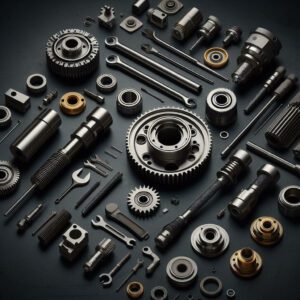In the dynamic landscape of industrial machinery, the adoption of replaceable parts has become a cornerstone for businesses aiming to enhance efficiency, reduce downtime, and optimise operating costs. Here are the top 10 benefits of integrating replaceable machinery parts into your equipment maintenance strategy:
1. Minimised Downtime:
– Rapid replacement of parts allows for swift repairs, minimising the downtime of machinery. This ensures that production processes remain uninterrupted, contributing to overall operational efficiency.
2. Cost-Effective Maintenance:
– Replaceable parts offer a cost-effective alternative to replacing entire machinery units. By targeting specific components, businesses can optimise maintenance budgets without compromising performance.
3. Extended Machinery Lifespan:
– Regular replacement of worn or damaged machinery parts contributes to the overall longevity of machinery. This proactive approach helps avoid cascading failures and ensures equipment remains in peak condition for an extended period.
4. Improved Performance:
– Up-to-date, replaceable parts ensure that machinery operates at its optimal performance levels. This, in turn, leads to higher productivity, better output quality, and increased customer satisfaction.
5. Enhanced Safety:
– Replaceable parts play a crucial role in maintaining the safety standards of industrial equipment. Regular replacements reduce the risk of malfunctions or failures that could compromise the safety of both equipment and operators.
6. Adaptability to Technological Advances:
– As technology evolves, so do machinery components. Adopting replaceable parts allows businesses to stay current with technological advances without the need for full equipment replacements, promoting agility and innovation.
7. Efficient Inventory Management:
– Managing a stock of replaceable parts is more efficient than storing a surplus of entire machines. It streamlines inventory management, reduces storage costs, and ensures that the necessary components are readily available when needed.
8. Customisation and Upgrades:
– Replaceable parts offer the flexibility to customise machinery according to specific needs. Additionally, businesses can easily incorporate upgrades or modifications without undergoing extensive overhauls.
9. Reduced Environmental Impact:
– Adopting a replaceable parts strategy aligns with sustainable practices by reducing waste. Rather than discarding entire machines, businesses can extend the life of equipment, contributing to a more eco-friendly approach.
10. Ease of Maintenance:
– Simplified maintenance procedures are a key advantage of replaceable parts. Technicians can quickly identify, remove, and replace specific components, streamlining the maintenance process and minimising labour costs.
In conclusion, the adoption of replaceable machinery parts is a strategic investment that goes beyond immediate cost savings. It is a proactive approach that empowers businesses to navigate the challenges of the industrial landscape with agility, efficiency, and a commitment to sustainability. Embracing the benefits of replaceable parts positions businesses to thrive in an ever-evolving marketplace while ensuring the longevity and optimal performance of their machinery.


